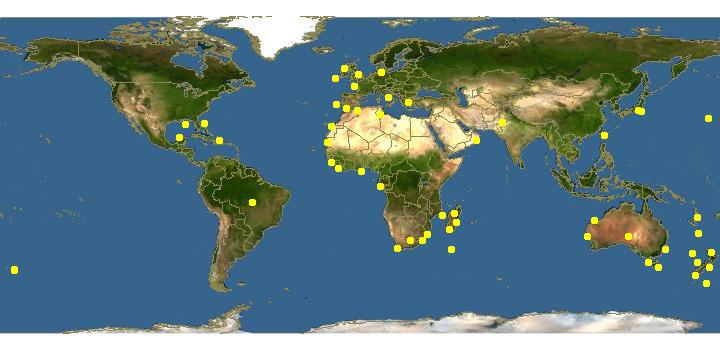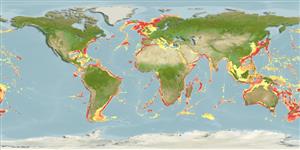http://www.fishbase.org/Summary/speciesSummary.php?genusname=Dalatias&speciesname=licha ---> http://192.134.151.83/Summary/speciesSummary.php?genusname=Dalatias&speciesname=licha
http://192.134.151.83/Summary/speciesSummary.php?genusname=Dalatias&speciesname=licha ---> https://fishbase.mnhn.fr/Summary/speciesSummary.php?genusname=Dalatias&speciesname=licha
https://fishbase.mnhn.fr/Summary/speciesSummary.php?genusname=Dalatias&speciesname=licha ---> https://fishbase.mnhn.fr/summary/Dalatias-licha.html
Dalatias licha, Kitefin shark : fisheries

You can
sponsor
this page
Common name (e.g. trout)
Genus + Species (e.g. Gadus morhua)
-

-
About this page
-
Languages
-
User feedbacks
-
Citation
-
Uploads
-
Related species
-


 Kitefin shark
Add your observation in
Fish Watcher
Upload your
photos
and
videos
Kitefin shark
Add your observation in
Fish Watcher
Upload your
photos
and
videos
Pictures
|
Google image
 Dalatias licha
Dalatias licha
Male picture by
Cambraia Duarte, P.M.N. (c)ImagDOP
Elasmobranchii (sharks and rays) >
Squaliformes
(Sleeper and dogfish sharks) >
Dalatiidae
(Sleeper sharks)
Etymology:
Dalatias:
Etymology not explained nor evident. A few online sources suggest
Dalatias
is derived from
dalos
(Gr.), torch or firebrand, but nothing in Rafinesque’s description supports this interpretation. Interestingly,
D. licha
is bioluminescent, a fact that was discovered and resported only recently and was certainly unknown to Rafinesque and other early naturalists. See: Mallefet J., D. W. Stevens, and L. Duchatelet. 2021. Bioluminescence of the largest luminous vertebrate, the kitefin shark,
Dalatias licha
: first insights and comparative aspects. Frontiers in Marine Science 8 (article 633582): 1-13. (
See ETYFish
)
;
licha:
Latinization of “La Liche” as reported by Broussonet (1780), an old French word for this shark, possibly from from the Occitan
lecha
or
lec
, meaning “glutton”. (
See ETYFish
)
.
More on author:
Bonnaterre
.
Environment: milieu / climate zone / depth range / distribution range
Ecology
Marine; bathydemersal; depth range 37 - 1800 m (Ref.
247
), usually 300 - 600 m (Ref.
247
). Deep-water; 72°N - 56°S, 98°W - 153°W
Western Atlantic: Georges Bank and northern Gulf of Mexico. Eastern Atlantic: Iceland (Ref.
12462
), Scotland, and Irish Atlantic slope to Morocco, western Mediterranean, Madeira to Cameroon. Western Indian Ocean: Mozambique and South Africa. Western Pacific: Japan, Australia, and New Zealand. Central Pacific: Hawaii.
Length at first maturity / Size / Weight / Age
Maturity: L
m
139.0
, range 117 - 159 cm
Max length : 182 cm TL male/unsexed; (Ref.
10717
)
Dorsal
spines
(total): 0;
Dorsal
soft rays
(total): 0;
Anal
spines
: 0;
Anal
soft rays
: 0. Moderately sized, short- and blunt-snouted shark with two almost equal-sized dorsal fins; papillose thick lips; small slender-cusped upper teeth and very large lower teeth with erect triangular serrated cusps and distal blades; first dorsal fin on back with its origin behind the pectoral rear tips and its base closer to the pectoral base than the pelvic fins; and caudal fin with the ventral lobe not expanded (Ref.
247
). Dark grey-brown to black; trailing edges of fins translucent (Ref.
26346
).
Found on outer continental and insular shelves and slopes (Ref.
247
). Mainly found on or near the bottom but readily occurs well off the substrate (Ref.
247
,
58302
). Often pelagic (Ref.
58302
). Found singly or in small schools (Ref.
6871
). Feeds mainly on deepwater bony fish, but also skates, other sharks (etmopterids in Ref.
123656
), cephalopods and crustaceans (Ref.
5578
). This bioluminescent shark (currently the largest luminous vertebrate) emit light ventrally to counterilluminate which might be used to illuminate the ocean floor while searching/hunting for prey; or to stealthily approach prey, using counterillumination camouflage, before striking fast when it is close enough (Ref.
123656
). Ovoviviparous (Ref.
205
), with 10-20 young born at 30-42 cm (Ref.
26346
). Used for its squalene liver oil, leather and meat, as well as for fishmeal (Ref.
6871
).
Ovoviviparous (Ref.
247
). 10-20 young born at 30-42 cm (Ref.
26346
); 10-16 young born at 30 cm TL (Ref.58048). Distinct pairing with embrace (Ref.
205
).
Compagno, L.J.V.
, 1984. FAO Species Catalogue. Vol. 4. Sharks of the world. An annotated and illustrated catalogue of shark species known to date. Part 1 - Hexanchiformes to Lamniformes. FAO Fish. Synop. 125(4/1):1-249. Rome, FAO. (Ref.
247
)
IUCN Red List Status (Ref.
130435
)
Vulnerable (VU)
(A2bd+3d); Date assessed:
03 July 2017
CITES
Not Evaluated
Not Evaluated
Threat to humans
Harmless
Human uses
Fisheries: minor commercial
FAO - Fisheries:
landings
; Publication:
search
| FIRMS -
Stock assessments
|
FishSource
|
Sea Around Us
More information
Countries
FAO areas
Ecosystems
Occurrences
Introductions
Stocks
Ecology
Diet
Food items
Food consumption
Ration
Common names
Synonyms
Metabolism
Predators
Ecotoxicology
Reproduction
Maturity
Spawning
Spawning aggregation
Fecundity
Eggs
Egg development
Age/Size
Growth
Length-weight
Length-length
Length-frequencies
Morphometrics
Morphology
Larvae
Larval dynamics
Recruitment
Abundance
BRUVS
References
Aquaculture
Aquaculture profile
Strains
Genetics
Electrophoreses
Heritability
Diseases
Processing
Nutrients
Mass conversion
Collaborators
Pictures
Stamps, Coins Misc.
Sounds
Ciguatera
Speed
Swim. type
Gill area
Otoliths
Brains
Vision
Tools
E-book
|
Field guide
|
Identification keys
|
Length-frequency wizard
|
Life-history tool
|
Point map
|
Classification Tree
|
Catch-MSY
|
Special reports
Check for Aquarium maintenance
|
Check for Species Fact Sheets
|
Check for Aquaculture Fact Sheets
Download XML
Summary page
|
Point data
|
Common names
|
Photos
Internet sources
AFORO (otoliths) |
Aquatic Commons
|
BHL
|
Cloffa
|
BOLDSystems
|
Websites from users
|
Check FishWatcher
|
CISTI
|
Catalog of Fishes
:
genus
,
species
|
DiscoverLife
|
ECOTOX
| FAO - Fisheries:
landings
; Publication:
search
|
Faunafri
| Fishipedia |
Fishtrace
| GenBank:
genome
,
nucleotide
|
GloBI
|
Google Books
|
Google Scholar
|
Google
| IGFA World Record |
MitoFish
|
National databases
|
Otolith Atlas of Taiwan Fishes
|
PubMed
| Reef Life Survey | Socotra Atlas |
Tree of Life
| Wikipedia:
Go
,
Search
| World Records Freshwater Fishing |
Zoological Record
Estimates based on models
Preferred temperature (Ref.
123201
): 2.5 - 14.3, mean 5.3 °C (based on 3093 cells).
Phylogenetic diversity index (Ref.
82804
): PD
50
= 1.0020 [Uniqueness, from 0.5 = low to 2.0 = high].
Bayesian length-weight: a=0.00372 (0.00141 - 0.00976), b=3.12 (2.89 - 3.35), in cm total length, based on LWR estimates for this (Sub)family-body shape (Ref.
93245
).
Trophic level (Ref.
69278
): 4.2 ±0.4 se; based on diet studies.
Resilience (Ref.
120179
): Low, minimum population doubling time 4.5 - 14 years (Fec=10-20).
Prior r = 0.27, 95% CL = 0.15 - 0.48, Based on 1 stock assessment.
Fishing Vulnerability (Ref.
59153
): High to very high vulnerability (65 of 100).
Climate Vulnerability (Ref.
125649
): Moderate vulnerability (38 of 100).
Price category (Ref.
80766
):
Medium
.
Nutrients (Ref.
124155
): Calcium = 6.01 [1.29, 31.29] mg/100g; Iron = 0.325 [0.075, 1.053] mg/100g; Protein = 19.3 [17.4, 21.2] %; Omega3 = 0.303 [0.107, 0.998] g/100g; Selenium = 21.6 [5.9, 65.2] μg/100g; VitaminA = 6.5 [1.4, 30.4] μg/100g; Zinc = 0.214 [0.104, 0.400] mg/100g (wet weight);
Back to Search
Random Species
Back to Top
Accessed through:
Not available
FishBase mirror site :
localhost
Page last modified by :
mrius-barile
- 20 July 2016
Fatal error
: Uncaught ArgumentCountError: Too few arguments to function checkEcotox(), 1 passed in /var/www/html/summary/speciessummary.php on line 2304 and exactly 3 expected in /var/www/html/includes/speciessummary.lib.php:2579 Stack trace: #0 /var/www/html/summary/speciessummary.php(2304): checkEcotox() #1 {main} thrown in
/var/www/html/includes/speciessummary.lib.php
on line
2579
|






